This week I’m sharing an old photo of my garden and some new areas cleared for planting. I’m also thinking about snowdrops and repotting a Monstera.
Woodland Walk
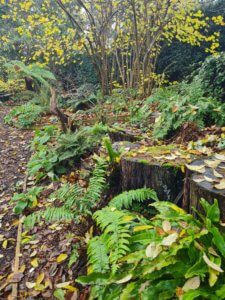
This area has probably become my favourite part of the garden which is a surprise to me as it was created under familial duress from an unpromising backwater, tucked out of sight and infested with nettles. Three and a half years on it contains some plants which provide all round interest – most notably the evergreen ferns and the structurally intriguing multi-stemmed hazels – as well as seasonal interest – most notably in spring. The point of entry to the walk will soon be given a new lease of life as a line of Leylandii hedging has been removed to create a new border ready for planting. I’m planning some shrubs and bulbs and some more ferns of course. The next couple of months will be spent researching what to buy.
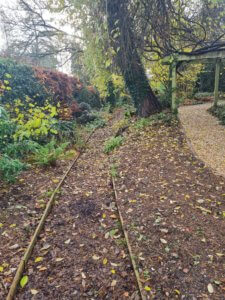
Lobed bed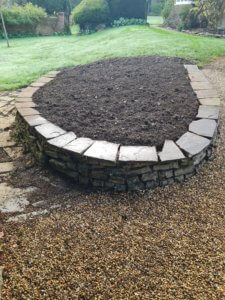
This lozenge-shaped bed, which has been cleared of a rampant and unruly rose featured in a previous post here, is not the most attractive shape. Its connection to the lawn beyond is also a bit awkward but should be made more attractive with some new shrubs and plants. It was important to me to keep these walls as I know this is a remnant of the original layout of the garden and dates from 1914 or from the early 1920s. My recent studies in garden history taught me how to research the history of gardens using old maps, leases and other archive material and as part of one of my assignments, I researched my own garden. Much of the material of use to me was old photographs donated by the family who built the house and laid out the garden. The dry stone wall and crazy paving can be seen in the photo below, taken when the bed contained a hedge. Both the hedge and dry stone wall then extended further across the lawn. A little flag can be seen in the photo, which I think indicates that the lawn was used as a putting green.
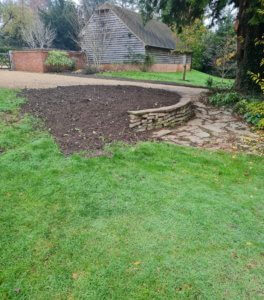
Early Snowdrops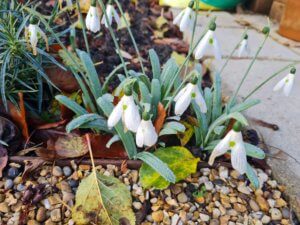
One of the early flowering varieties of snowdrops is just coming to an end in the bed up by the greenhouse. It’s a variety called Galanthus elwesii ‘Hollis’ and was discovered in the garden of my late friend Mr Snowdrop. He gave me a small pot of them and the clump has now more than doubled in size. My love of snowdrops continues to grow and each year I add a couple of new ones to my collection, some kept in pots so I can keep an eye on them but others planted out in the rockery and woodland walk where they seem to much prefer life doing their own thing.
Next week I shall be giving a talk to a local gardening group which they asked to be called ‘Galanthophilia and what all the fuss is about’ and it aims to explain some of the attributes which make snowdrops so collectable. Hollis will be past its best by then but I’m hoping a couple of other early flowering varieties in pots might be flowering for me to take along to show them. If not I hope they will enjoy some of the photographs of favourite snowdrop varieties taken over the years.
Still clinging on – Cornus leaves
Most leaves have fallen in the last week, blown from the trees in the wind and trodden to a soggy mess on the ground. This Cornus kousa refuses to follow the trend and still has many burnished leaves attached. Swathed in fog, many looked a little drab but when blue skies and sunshine returned on Friday the tree was showing off.
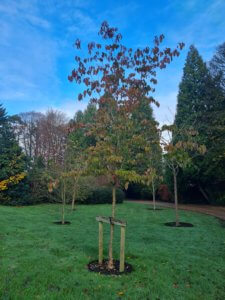
Monstera
Indoor jobs were preferable on Thursday when the weather turned cold and foggy. I chose to tackle a repot of this Monstera in my sitting room, which is climbing up a string towards the beams above. I took the opportunity afforded by a bigger pot to add in a couple of other Monstera cuttings which I had been training up bamboo canes. The overall effect now is even more luscious.
After the repot I spotted an attractively shaped grouping of newish leaves and snipped these off as a cutting. The aerial roots at the base will quickly develop below the soil to anchor and nourish the cutting in its new pot. Monstera cuttings are very easy and I have previously written a guide here.
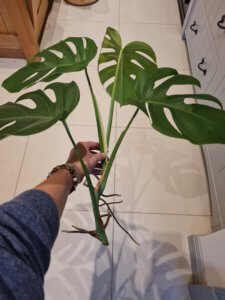
Bee hotel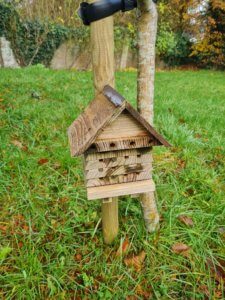
These little bee houses contain tubes that are designed for solitary bees to lay their eggs in. Once they have done so they add in a little store of pollen and nectar and block up the entrance to the tube with mud. Next spring the larvae will hatch, eat their packed lunches, evolve into bees and find their way out. The tubes should then be cleaned out by me for reuse and to encourage a healthy environment for future generations. This house has been attached to a tree stake in my orchard area by the man that helps me in the garden. I read now that ideally, they should be a metre off the ground so this one’s a little low but they do already contain some inhabitants waiting for spring.
This seasonal diary is part of a weekly link-up of garden bloggers from around the world, called Six on Saturday. For more information and links to other blogs crammed with gardening activity, check the blog of host Garden Ruminations.
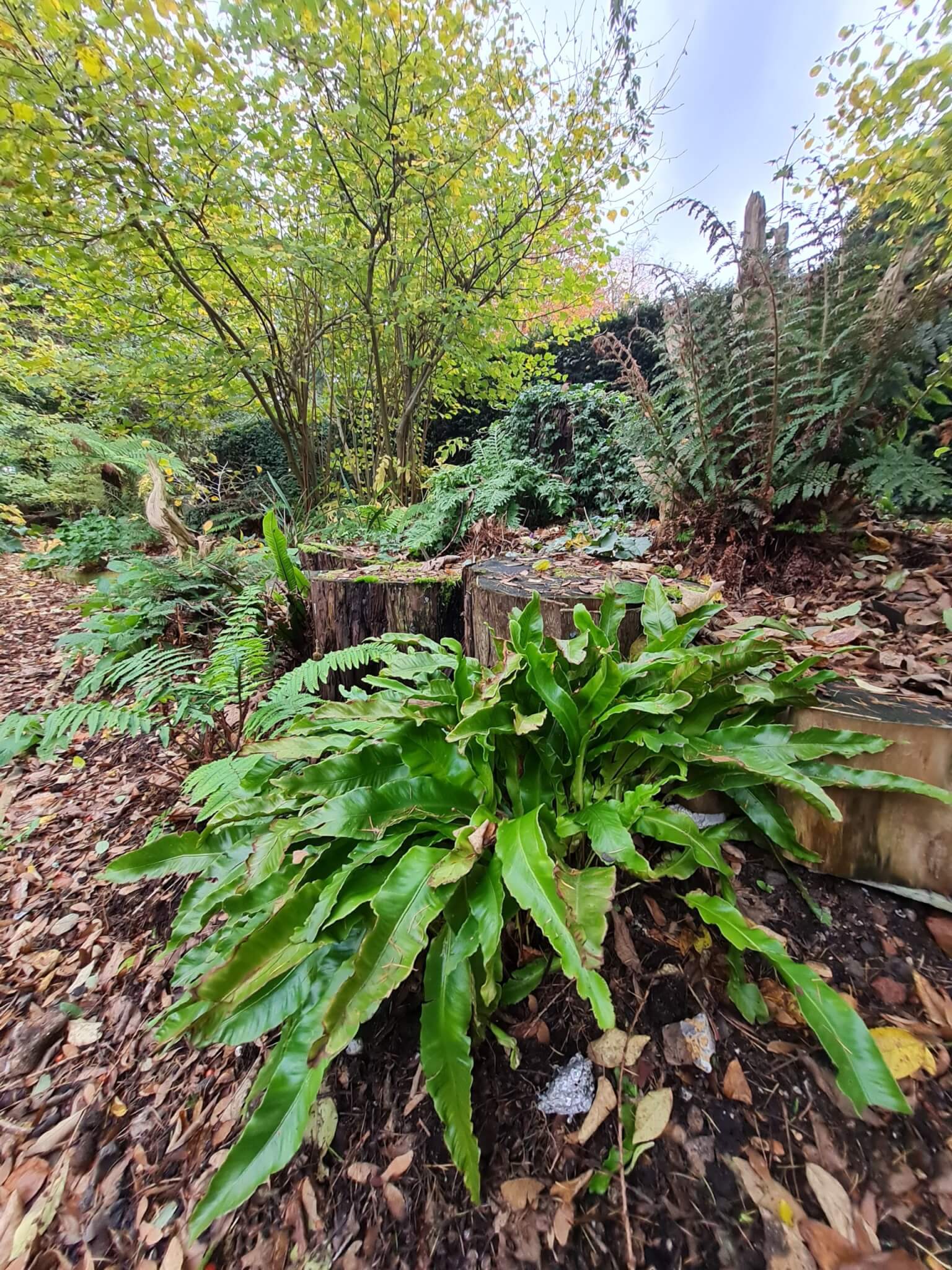
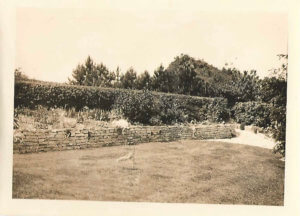
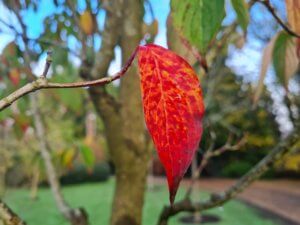
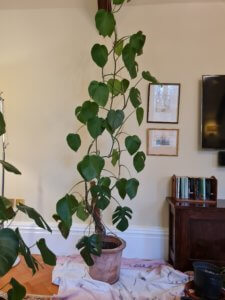
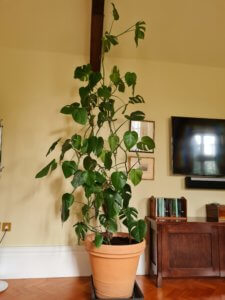
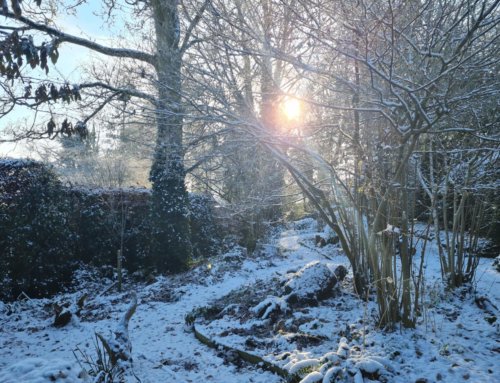
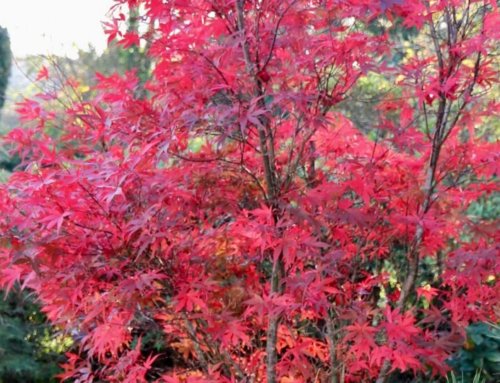
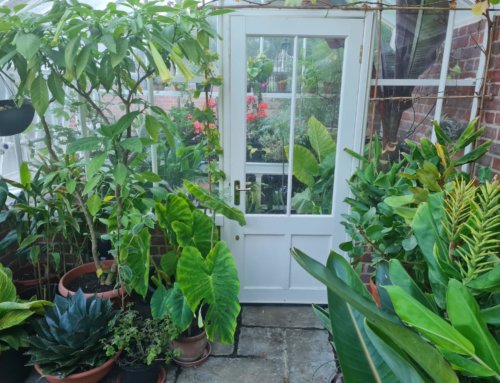
I have a big pile of bamboo, cut from my big clump and far more than I use. I keep meaning to cut a lot of short length and bundle them up for bee nests. It wouldn’t be as elegant as you bee house but might well work. I just need to do it.
Maybe a project for a rainy day? It’s really lovely when you see that they’ve been used; the entrances neatly blocked up. Having lots of bamboo is a real advantage as you can just discard used ones and add in clean ones from your supply.
What a lovely bit of history research about your garden. And so great to have old photos too.
Hi Rosie, I have about 40 old photos to work from. Some were given to me by the former owner and some were sent from Australia and Canada by the relatives of the family who built the house. I couldn’t have achieved much without them so I feel very grateful.
I didn’t go to see but I don’t think I have such pretty cornus kousa leaves as that. I love old photos that help tell a story and I think that with this dry stone wall you managed to keep something going.
Hi Fred, the research I’ve done on my garden has made me love it more as I gained an insight into how and why the bones were laid out in the way they were. The man who I think designed the house will have laid out the garden too and he published a book in 1912 which explained how to connect house to garden. When you read the book you can almost hear his voice and what he would have said to his clients as he sold them his vision for their new home. It moved me greatly.
Fantastic ! Speaking of bones and wall, an interesting find in a chateau near my house. The owners are friends and there was an article about it in a newspaper. I add the link and you can use Google Translate to read it if you want. https://www.lecourriercauchois.fr/actualite-331918-photos-duclair-des-os-decouverts-dans-les-murs-d-enceinte-au-chateau-du-taillis
Thanks for the link Fred. So poignant that the fruit trees were planted just before war broke out. I must admit I find the bones a bit creepy though.
I enjoyed reading your post and also followed the links. Your fern and spring garden are really delightful, thanks for the links to the spring version.
Hi Noelle, so pleased you followed the links. I do try to make connections where I remember as gardens are more dynamic than diary posts give them credit for!
I’m fascinated by garden history and I’m glad you shared the old photo of your garden. I’ve not found any photos of mine, except for the front garden, but there are odd bits of path and wall here and there and it makes me wonder what it all used to look like. I do know part of it was the village cricket pitch though!